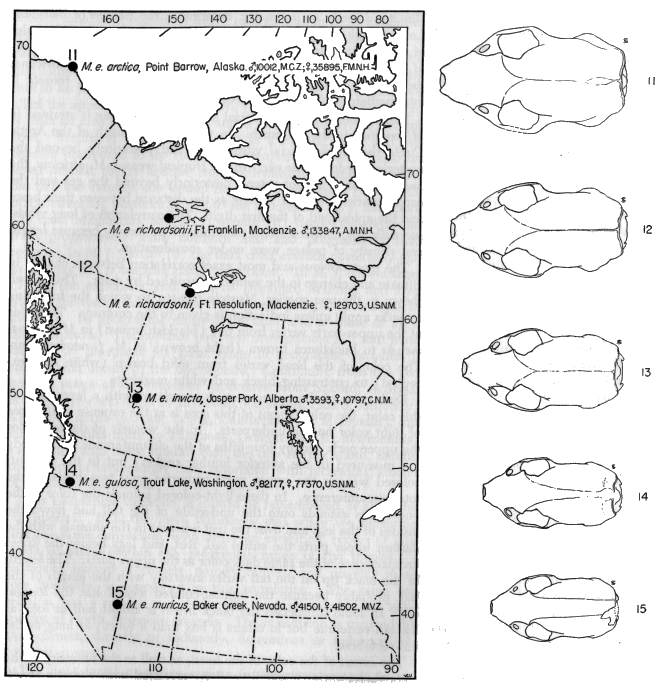
Adaptive
evolutionary variation:
Bergman's Rule in North American ermine (Mustela
erminea)

Adaptive
evolutionary variation:
Bergman's Rule in North American ermine (Mustela
erminea)
In western North America, Least
Weasels (ermine) [Mustelidae] exhibit a marked latitudinal
gradient, with larger animals found in the more northerly
parts of the range. The map indicates the origins of each
of the skulls: each typically represents a different named
subspecies. Mean and variance of size are highly correlated with
latitude. The trend is an example of Bergman's Rule:
size increases exponentially as length increases linearly, and
bulkier animals are better able to retain heat in cold
environments. Bergman's Rule is one of a series of Ecogeographic
Rules that occur across many species, and which often are
associated with thermo-regulatory adaptation. Other
examples include Allen's Rule, which
finds more compact extremities in colder northern latitudes, and
Gloger's
Rule, which finds darker pelage or skin coloration
in more humid, tropical environments.
"Shape-shifting"
adaptive change in response to warming global climates has
recently been demonstrated in a number of species, especially
with respect to Allen's Rule.